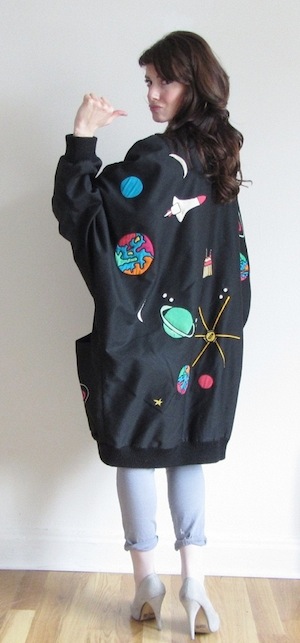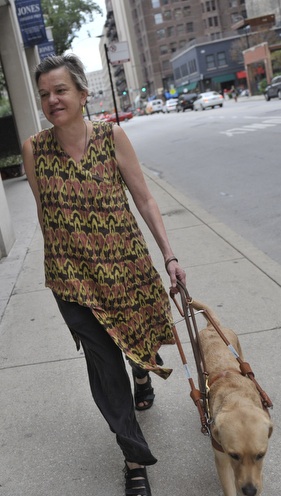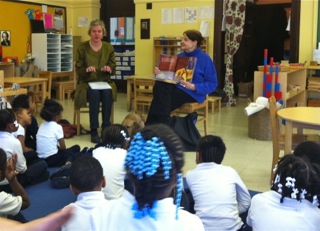Understanding blindness–through photography
March 7, 2013 • 30 Comments • Posted in Beth Finke, blindness, Mike Knezovich, UncategorizedMy husband Mike does the Facebook thing, and earlier this week he posted a link to a collection of portraits of people who can’t see there. That post of his got so many comments that I thought maybe my blog would be a good place to explain how we met the photographer.
A couple years ago I got an email from a stranger who said he was taking portraits of people who can’t see. “I am emailing you to inquire if you would be interested in participating in the project,” he wrote. “It would be an honor to take your picture!”
Uh-oh, I thought. Another nutjob who heard about my job modeling nude for art students. Before hitting the delete button, though, I did a little research. And guess what? The guy was legit!
Charlie Simokaitis is a sought-after commercial photographer whose 13-year-old daughter has a deteriorating eye condition that will soon leave her completely blind. Faye Simokaitis is the inspiration for Fade to White, a compilation of the portraits her dad has taken of people who are visually impaired or blind. Charlie Simokaitis describes the project as an “effort to try to understand the impending reality” of his daughter’s loss of sight. From his artist statement:
As I spend more time with blind people, I am developing a perverse kinship with the very condition that will eventually lay claim to my daughter’s eyesight. For me, solace lies in the creation of this work.
After reading that, I hit the reply button on his email message. Y-E-S, my talking computer parroted the letters I typed. Sitting for a portrait would be an honor.
Charlie likes to meet with his models to chat before a shoot, so I suggested we meet for lunch at Hackney’s. Once Mike took a look at some of the portraits Charlie already had up on the Fade to White web site, he decided to come along. “These pictures are great, Beth,” he told me. “I want to meet this guy!”
Charlie is as striking as the photographs he takes. Over lunch, he told Mike and me a little about the research he had done before starting his project. Photographing the blind has its roots in street photography, he said. It was pretty much voyeuristic. “You know, the blind person would have no idea the photographer was there.” In contrast, Charlie wanted his subjects to know exactly what he was up to, and he didn’t need us to be grasping white canes or posing with our guide dogs. “Most of my portraits are from the waist up.” More from his artist statement:
This work looks at the unseeing Other while attempting to understand the fetishism of other people’s perceived pain and the taboos and tacit responsibility of representing a blind person.
It was hot the afternoon we scheduled the photo session, and I showed up wearing a dark red tank top. Charlie knew right away where he’d want me to pose, and our session took about an hour. “Look up at the sky,” he’d say. “Don’t smile. Look towards the sound of that truck. Chin down. Don’t smile. Shoulders back.” For most of my shots, I’m standing against a yellow brick wall in Printers Row Park. The session gave me an idea of what it might be like to be a fashion model.
Charlie used film to take his portraits, and he completed his project — and his Master’s thesis — this past year. My portrait is included in the collection, and it’s getting rave reviews. See for yourself: Charlie’s Fade to White photos are available online.






